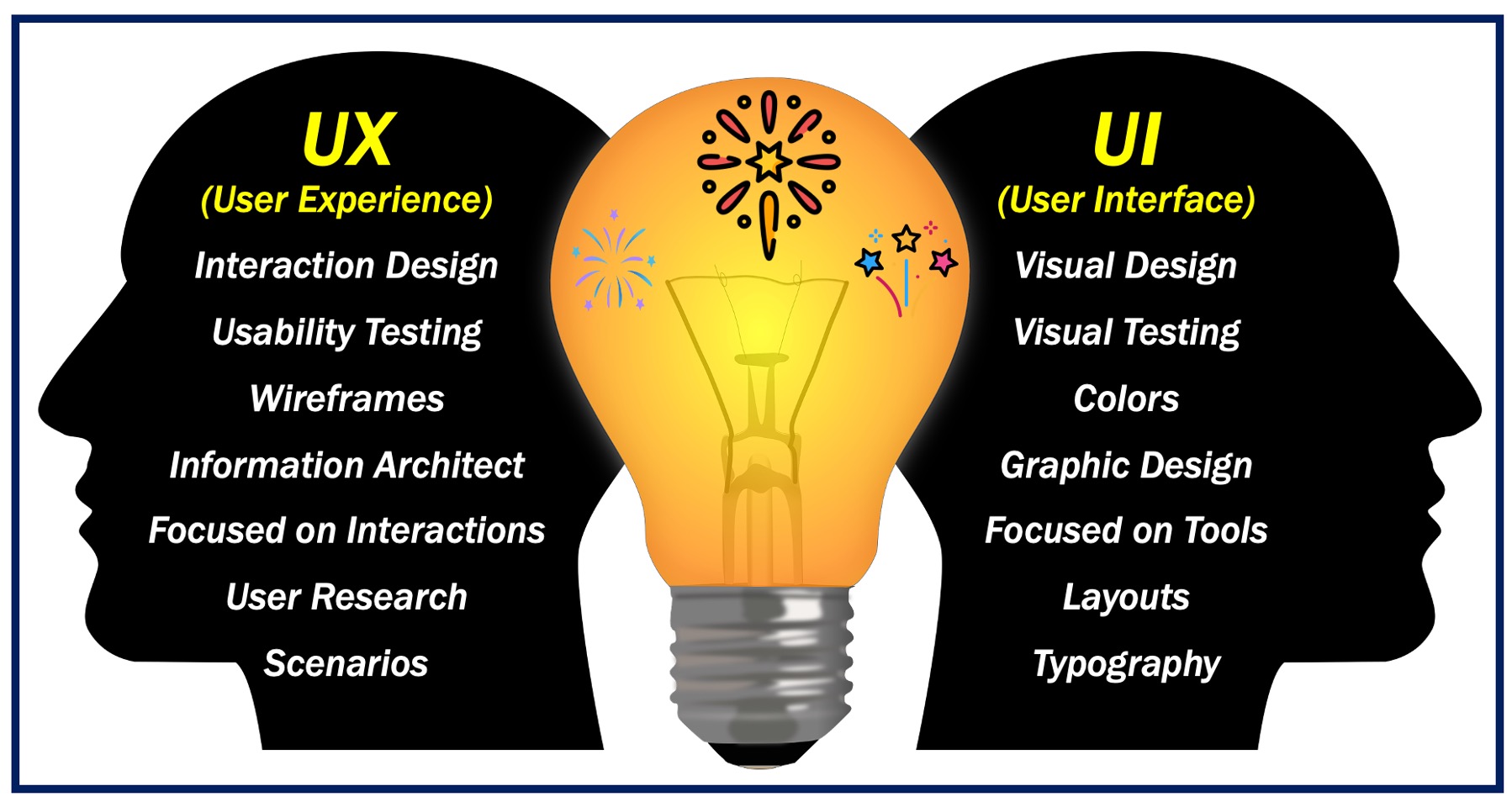The concepts of UX (User Experience) and UI (User Interface) designs are very important today; they help create engaging and effective applications and websites. They ensure that digital products not only look good but also function well.
Definitions
-
User experience (UX) design
UX focuses on the overall experience of a user when interacting with a product, such as an application or website. It emphasizes usability, accessibility, and the enjoyment we derive from using the product.
-
User interface (UI) design
UI is all about how the product looks, it deals with the specific aspects of how users interact with the interface of a product. It also includes its design, layout, visual elements, and in some cases interactive components.
Relationship between UX and UI
-
Complementary roles
UX and UI work effectively together, with UI forming a part of the overall UX. The product becomes more than just usable when it has a well-designed user interface (UI).
-
Different focuses
UX focuses more on the overall feel of the experience, and UI is about the way the products looks.
Key elements
There are many key elements to UX design, such as:
-
Usability
Making sure the product is easy and efficient to use.
-
Functionality
Ensuring that all of the features work as expected.
-
Accessibility
Designing the product so all users can use it effectively.
-
Desirability
Creating an appealing and attractive experience that draws users.
-
Visual design
Incorporating colors, typography, and images.
-
Interactivity
Designing interactive elements like buttons, touch controls, and sliders.
-
Consistency
Maintaining a consistent look and feel throughout the product.
- Responsiveness
Apart from making sure the interface looks good, it also needs to work well on a variety of devices and different screen sizes.

Importance in digital products
Why is UX/UI so important in digital products? Let’s find out why:
-
User retention
Users are more likely to come back if the UX/UI design is optimal.
-
Brand perception
Users’ perceptions of a brand are significantly influenced by its design, which often reflects the brand’s image and values.
-
Conversion rates
Effective design can lead to higher conversion rates. Conversion rate refers to the percentage of, for example, website visitors who end up becoming paying customers, add signatures to a petition, subscribe to a newsletter, fill a form, etc.
Challenges
There are many challenges when making a good UX/UI design, some of the most common are:
- Balance
Striking the right balance between aesthetics and functionality in a product.
- User diversity
Designing products that cater to a broad range of users with diverse tastes and abilities.
- Evolving technologies
Technology is evolving at a rapid rate. It is important to keep pace with the changes, otherwise, products and designs may quickly become outdated or irrelevant.
The future
The future of UX/UI is bright:
-
Emerging technologies
Incorporating AI (artificial intelligence), VR (virtual reality), and AR (augmented reality) for more immersive experiences.
-
Voice user interface
It will become increasingly more important to design products that users can talk to.
-
Personalization
Creating individualized experiences depending on a user’s preference and behaviors.
Written by Nicolas Perez Diaz
